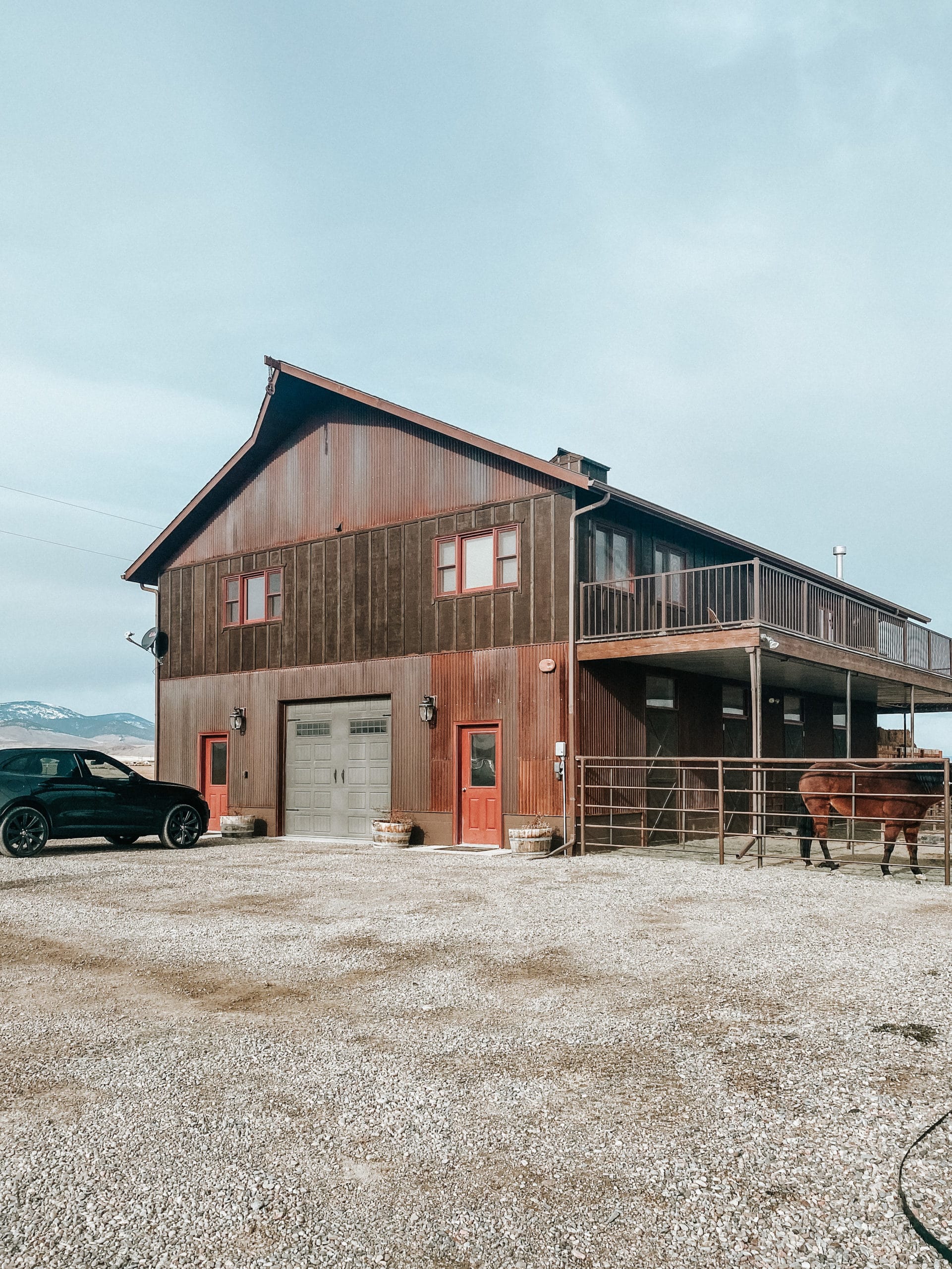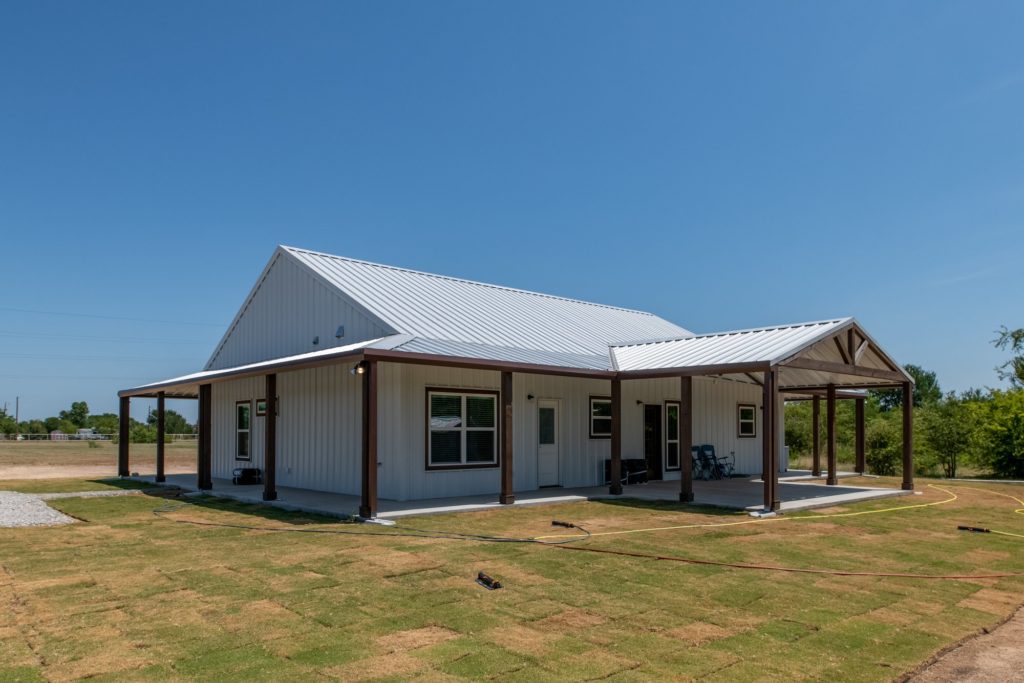Barndominium Builder Near You: Trusted Builders for each Job
Barndominiums Vs. Typical Houses: an In-depth Comparison of Way Of Life and Functionality
The choice between barndominiums and traditional homes encompasses numerous factors, consisting of way of life choices and practical requirements. Barndominiums are identified by their open formats and versatility, commonly attracting those who focus on common living and flexibility. In contrast, typical homes use a more organized setting, which might better offer households seeking personal privacy and a sense of background. As we take a look at the cost effects and environmental considerations, it comes to be clear that the option extends past mere aesthetics and capability; it invites a much deeper exploration of what absolutely defines a home.
Summary of Barndominiums
Barndominiums, an unique real estate fad obtaining popularity across numerous areas, blend the rustic appeal of barn-style design with the performance of contemporary living areas. These special frameworks normally contain a metal or wood framework, combining open layout and high ceilings with energy-efficient attributes. Often positioned on large country buildings, barndominiums supply home owners the chance to take pleasure in a peaceful lifestyle while providing enough room for numerous tasks.
The flexibility of barndominiums extends past their aesthetic appeal; they can work as both living quarters and practical areas for hobbies, workshops, or also little companies. Their flexible style permits simple personalization, suiting diverse household requirements and preferences. Lots of owners appreciate the reduced maintenance needs related to metal house siding and roof, contributing to lasting sturdiness.

Qualities of Typical Homes
Emphasizing ageless style and convenience, typical homes are characterized by their unique architectural designs, which usually reflect historical influences and regional appearances. Common features include symmetrical facades, gabled roofing systems, and an emphasis on craftsmanship, leading to a cozy and welcoming environment.
Typical homes usually include elements such as crown molding, wainscoting, and wood floor covering, boosting their timeless allure. They normally include numerous spaces with specified functions, promoting household interaction while enabling privacy. website. The design commonly consists of official living and eating locations, which are favorable to amusing visitors and holding household celebrations
Exterior materials such as brick, wood, or stone are frequently used, adding to resilience and a sense of permanence. Barndominium builder. Additionally, numerous typical homes are made with front verandas or stoops, cultivating a feeling of neighborhood and connection with the neighborhood
Landscaping plays a substantial duty in standard home style, with well-maintained gardens and paths that improve visual charm - visit site. Generally, standard homes symbolize a sense of nostalgia and stability, interesting those that value heritage and a much more structured living environment
Cost Contrast
Commonly, an expense contrast in between barndominiums and typical homes reveals considerable distinctions in building expenditures and general investment. Barndominiums, usually built from steel or steel frameworks, normally sustain lower material and labor expenses than conventional homes developed from wood and brick. The simplified style of barndominiums can translate to reduced building and construction times, better reducing labor prices and expediting tenancy.
Typically, the expense per square foot for a barndominium ranges from $100 to $150, while conventional homes can differ commonly, usually dropping reference between $150 and $300 per square foot, relying on area, materials, and style complexity. This expense variation makes barndominiums an eye-catching choice for budget-conscious buyers looking for bigger space without sacrificing quality.
Additionally, barndominiums may bring about long-term cost savings via reduced upkeep costs, energy efficiency, and insurance coverage rates. Their sturdy building materials typically call for much less maintenance with time contrasted to typical homes. It is necessary to think about that while initial expenses may be lower for barndominiums, the last financial investment will certainly also depend on private personalization and wanted facilities, which can affect the general expenditure in both real estate types.
Way Of Living and Area Factors To Consider
When taking into consideration lifestyle and space, barndominiums use an unique adaptability that allures to a variety of home owners. These hybrid frameworks combine household living with practical room, typically featuring open floor plans that can be adjusted to match private demands. This flexibility is particularly helpful for family members or individuals seeking a tailored living atmosphere, enabling diverse uses such as office, workshops, or recreational areas.

In addition, the aesthetic charm of barndominiums can cater to both rustic and modern tastes, making them a versatile option for numerous style preferences (Barndominium repair). Ultimately, the selection between a barndominium and a typical home frequently depends upon exactly how well each option aligns with the homeowner's way of living desires and spatial demands, highlighting the significance of considering individual priorities in the decision-making process
Environmental Influence and Sustainability
The environmental impact and sustainability of barndominiums existing compelling benefits contrasted to typical homes. Mostly built from steel and various other long lasting products, barndominiums are typically developed making use of recycled resources, lowering the need for brand-new products and lessening waste. Their style commonly highlights open spaces, which can cause lower energy intake for heating and air conditioning compared to typical homes with more fractional designs.
In addition, barndominiums can integrate sustainable features such as solar panels, rain harvesting systems, and progressed insulation techniques, improving their energy performance. The convenience of their style allows house owners to incorporate these innovations extra effortlessly than in lots of traditional homes, which may require considerable retrofitting.
In addition, barndominiums typically call for less sources for building due to their simpler, much more reliable designs. This not just lowers the carbon impact associated with structure yet additionally adds to a much more sustainable way of living. In comparison, conventional homes might entail greater degrees of energy expenditure and source make use of throughout their lifecycle, from building and construction to upkeep. On the whole, barndominiums represent a forward-thinking technique to sustainable living, lining up with contemporary ecological top priorities.
Conclusion
In recap, the option in between barndominiums and conventional homes hinges on private lifestyle preferences and practical requirements. Barndominiums, with their open layouts and sustainable materials, provide to those looking for adaptability and communal living.